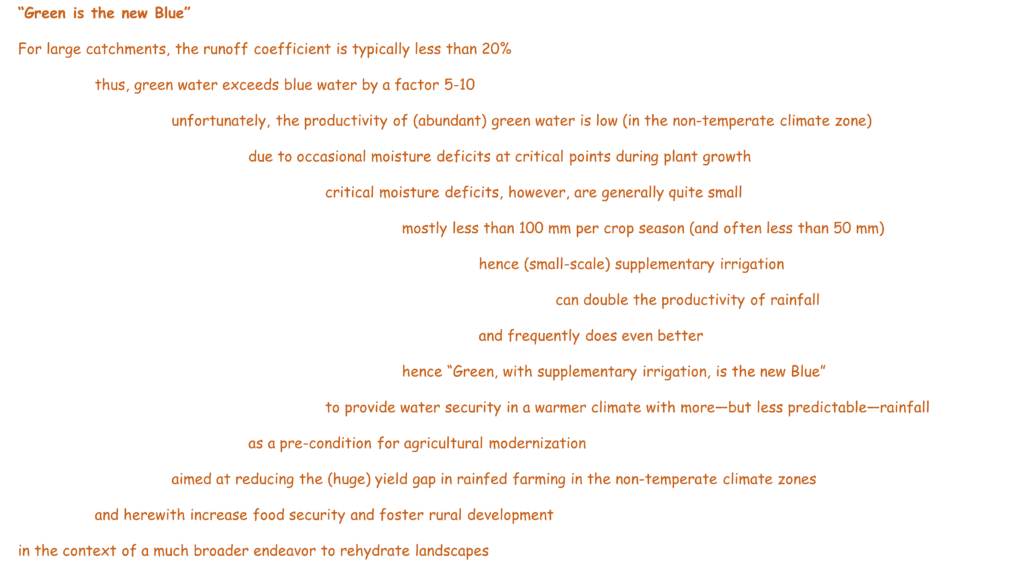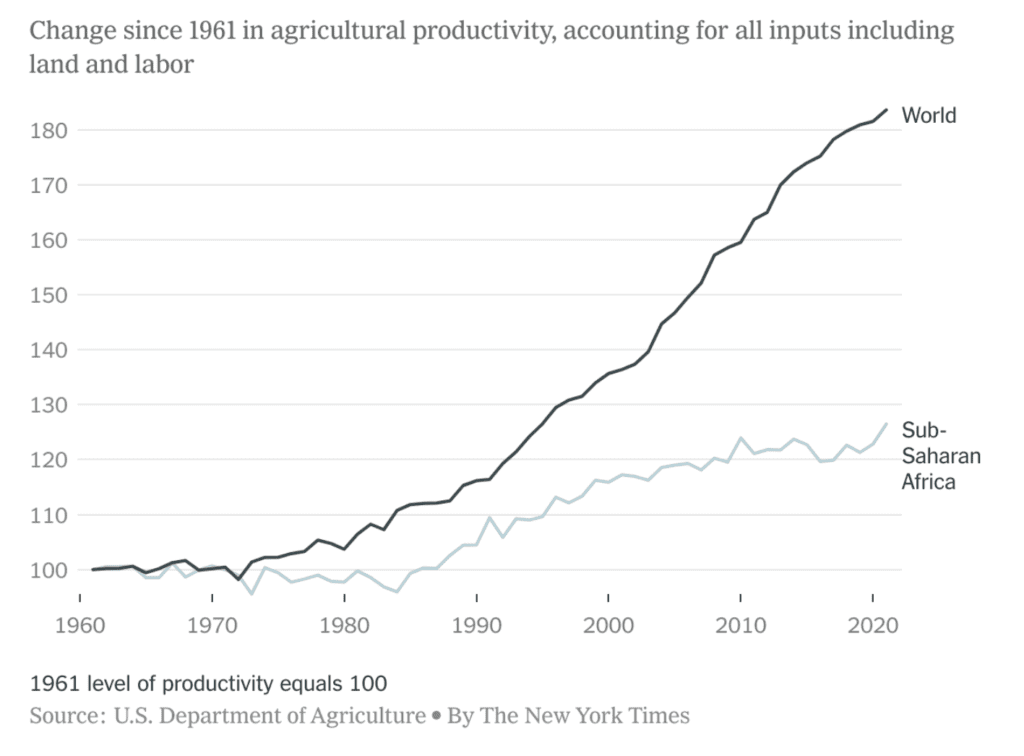In an article in the Guardian on 4 March 2024, George Monbiot—an opinion writer—worries about a hotter climate with less water. He fears that rising demand for food will outpace crop production because of water shortages in many places on this globe. He refers to a paper by Davis et al from 2017 (Water limits to closing yield gaps) that estimates that water use for irrigation would have to increase by 146% by the middle of the century just to keep up with global food demand. He foresees conflicts over water resources and social unrest because of water stress.
It is indeed a bleak picture that he paints.
It is true that most of the world’s renewable river flows have already been allocated for agricultural purposes, and that there is not much left to further expand irrigation. Nevertheless, I think we still have many options to balance food demand with food supply. These include:
- Reduce food waste; it is estimated that some 30-40% of agricultural produce is lost somewhere in the chain from harvest to the dinner table.
- Reduce food consumption; a substantial percentage of the world’s population eats far more than they need and, to make matters worse, adversely impact (ruin) their health in the process; in particular, cutting back on sugar (empty calories…) will substantially reduce irrigation water use.
- Reduce irrigation water use for non-food produce such as (first generation) biofuels; note that ethanol production from corn (in the USA) requires a subsidy to make it economically viable, and that there are nowadays many alternative fuel sources for vehicles (including renewable electricity).
- Change our diet (as Monbiot also mentions) to reduce its (blue) water footprint; there are many ways to do this.
- Increase the productivity of (abundant) green water—both for livestock and crop production; (blue) groundwater could play a role in this.
‘Blue water’ is water in rivers, lakes, and groundwater. ‘Green water’ refers to rain and soil moisture.

Make maximum use of rainfall
Rainwater represents a huge volume of water and is free. Most of it (>80%) never reaches the river or groundwater system. It is a distributed water resource that is not available for usage outside its immediate vicinity. Productive use of rainfall is mostly concerned with rainfed agriculture, grasslands that support pastoralism, or maintaining diverse ecosystems. The productivity of rainfall is typically low—except for the temperate climate zone.
The low productivity of rainfed agriculture is caused by the unreliability of rainfall in most of the world. While periodic moisture deficits in the growing season are typically small, they can nevertheless cause crop failure. Under these conditions, farmers are unwilling to invest in agricultural inputs and improved cultivars that are at the basis of agricultural modernization. However, many strategies exist to achieve water security in rainfed agriculture. They typically involve comparatively small volumes of water. Some strategies are concerned with supplementary irrigation from groundwater or local surface water sources. Others focus on increasing soil moisture storage or establishing cover crops that reduce evaporation and lower soil temperatures. Still others aim to create micro-climates or are based on agro-forestry. Often a combination of measures is used. All these strategies are small-scale and can be implemented by local actors. Rainwater productivity improves proportionally with higher crop yields.
The potential for improving rainwater productivity is large. However, it is noted that the required investments are only warranted when (smallholder) agriculture is a viable economic proposition. That is often not the case. In my view, that’s the real bottleneck to agricultural modernization, food security, and making better use of (rain) water resources.
Use groundwater to improve rainwater productivity in the agricultural sector
Groundwater resources worldwide are vast and exceed surface water resources by a wide margin.
Renewable groundwater is ideally suited to increase the productivity of (unreliable) rainwater by providing water security. In this setup, groundwater does not serve as the primary water source but supplements rainfall only when occasional moisture deficits occur. The volumes involved are comparatively small. Note that water security is a prerequisite for agricultural modernization and thus for improving water productivity in rainfed agriculture. The sustainable multi-year groundwater recharge-abstraction balance differs for each location.
Landscape rehydration
Making better use of green rainwater for food production is part of a much broader endeavor to rehydrate landscapes. This primarily concerns capturing and storing rainfall, slowing down (thus, de-energizing) runoff, and regenerating a vegetation cover that serves as a soil-carbon-sponge (with huge dividends in terms of moisture and nutrient availability).
The benefits of the rehydration effort are multiple and comprise arresting and reversing of aridification, wildfire mitigation, flood attenuation, erosion control, topsoil creation and nutrient recycling, increased food production, more biodiversity, carbon sequestration, climate change adaptation, etc.
When implemented at scale, a rehydrated landscape can drive the ‘small water cycle’ that contributes to cooling the local (and even global) climate.
The Mulloon Institute has published a series of excellent short videos to explain all components of the landscape rehydration process.
The graph below was copied from Peter Coy’s NYT newsletter on 1 April 2024 called “Unproductive Agriculture Is Holding Africa Back”. It shows the stunted increase in average factor productivity in Sub Saharan Africa (SSA) since the 1960s. Thus, the figure implicitly illustrates the huge yield gap in SSA.
Total factor productivity measures how much output increases over and above what one would expect from increased inputs of land, labor, and machinery.
Since most agriculture in SSA is still ‘rain-fed’, water insecurity is probably a major cause for the stagnating agricultural productivity. Once water security is achieved, other constraining factors (such as poor-quality seeds and insufficient agricultural inputs) can be addressed. But the sequence of the interventions must be correct. Water security comes first!

Link to Peter Coy’s newsletter
Link to George Monbiot’s article:
